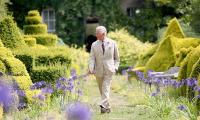The foreign delegations that travelled from their capitals to participate in the UN General Assembly Annual session 76 in New York have returned. The UN HQ is back to normal and UN committees are working on various drafts, resolutions and documents to give them some shape and direction.
President Biden of the US, the second speaker of the first day session of the UNGA, made no direct reference to the ensuing ‘cold war’ or encirclement of China but he did notify the global community that by the end of the current decade, this world will be changed.
On his return to Washington, President Biden is faced with challenges on his domestic front that also bear global effects. Raising the national debt ceiling or facing a possible financial default in America is the latest challenge on his presidential list of things to tackle. The approval of Biden’s infrastructure proposal of the 'Build Back Better' initiative – ranging from $3.5 trillion to $ 4.5 trillion – is in jeopardy. His own Democratic Party’s progressive group of legislators are blocking his way and rival Republicans are watching the internal squabble in the Democratic Party that holds a majority in the House of Representatives.
During his visit to Michigan state, President Biden told a group of Congressional leaders and the audience that his financial proposals would inject new life into the American economy, but the Republicans are unmoved while his own progressive Democrats as well as moderates remain divided.
In the Senate, Republicans are talking of a filibuster that will require approval by 60 senators and not 51 senators, in a Senate of 100 senators equally divided among Democrats and Republicans.
In addition there is severe criticism against the US withdrawal from Afghanistan, disagreements by some top American military generals and the general impression that the decision to withdraw from Afghanistan damaged America’s image as world leader. In short, President Biden is fighting for his political survival and hangs in balance.
Our Foreign Minister Shah Mahmood Qureshi was here at the UNGA Session, while Prime Minister Imran Khan made an effective, well-written and well-delivered virtual address to the UNGA – a day before Indian PM Narendra Modi addressed the UN in person.
Foreign Minister Qureshi had a list of engagements, mostly bilateral meetings with counterparts from other countries. His main mission to the UN was advocacy for the Kashmir cause, highlighting Indian atrocities and seeking support for the resolution of the Kashmir dispute.
A cursory look at his list of bilaterals speaks for itself, with Norway, Egypt, EU, Turkey, Saudi Arabia & others on the list. The meeting of the OIC Contact group in New York is an annual routine aimed at passing resolutions without any concrete steps for action or solution of the problem. The OIC Contact Group’s meeting was held at the residence of our Ambassador Munir Akram. The meeting was also attended by President Azad Kashmir Sultan Mahmood and Chairman of the Kashmir Committee Shaharyar Afridi.
All engagements of the foreign minister (except community gatherings and the concluding press conference) were kept away from the media. The time, location, duration of these bilateral meetings were also kept secret. Only one-sided press releases, photos and other details issued by the Pakistan Mission or MOFA gave some insight into what was happening. In the rather free city of New York, a sort of censorship was thus experienced by the media.
The meeting with U. Secretary of State Antony Blinken was finalised in the last minutes and the Pakistani delegation had to rush to a hotel to meet the American secretary of state. Pakistan’s ambassadors to the US Dr Asad Majeed and the UN Munir Akram were part of the Pakistani team while the eternal critic of Pakistan, Ambassador Zalmay Khalilzad, was on the American team. The meeting lasted longer than expected, as the focal point of the talks was Afghanistan. The situation in Occupied Kashmir was raised by the Pakistani delegation, but received no substantive response from the other side. It has been the pattern of our policy to announce what we emphasised in our meeting, but we seldom mention what the other side raised in response.
Soon after we facilitated Henry Kissinger in his historic, ice- breaking travel to China in 1971, Pakistan was cut in half by Indo-Soviet collaboration. Fifty years later, Pakistan is the target of US-India ambitions in the region, again. Thanks to the diplomatic vision of our policymakers.
The writer is a journalist based in the US.
Although Pakistan became an active part of Western bloc, Islamabad adopted a principled position on several...
Trump has been leading on most opinion polls, particularly since the debate that badly exposed Biden
Democracy has been declining in America for decades, especially under the impact of money and media
At heart of these events lies the phenomenon of overtourism
General Zia, perceiving student unions as potent adversaries, imposed a ban on February 9, 1984
Here’s to kindness, especially towards animals which eventually translates into kindness towards one another







